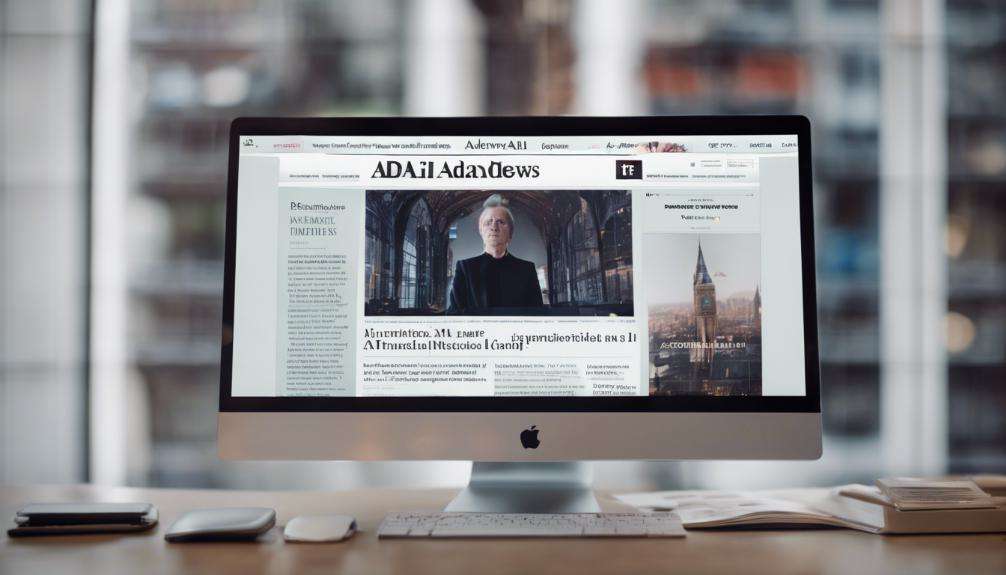Table of Contents
OpenAI and the Financial Times have entered a strategic partnership through a licensing agreement. This collaboration enables users to access curated content like summaries, quotes, and links from the Financial Times, with the goal of harnessing AI to benefit news organizations and journalists. This partnership signifies an innovative approach to empowering the media landscape.
Main Talking Points
- Strategic collaboration aims to empower news organizations and journalists.
- Users access curated summaries, quotes, and links from Financial Times.
- Licensing agreement involves compensation to Financial Times.
- Builds on OpenAI’s partnerships with Associated Press and Axel Springer.
- Focus on integrating AI to revolutionize news delivery.
Partnership Details

Through a strategic collaboration between OpenAI and the Financial Times, a significant partnership has been established to enhance the training of ChatGPT by incorporating select content from the renowned publication.
The licensing agreement entails OpenAI compensating the Financial Times for the utilization of their content, with the commercial specifics undisclosed but anticipated to be in the millions.
Users will have access to curated summaries, quotes, and links from the Financial Times, aligning with OpenAI’s objective to empower news organizations and journalists through AI.
This partnership builds on OpenAI’s previous collaborations with prominent entities like the Associated Press and Axel Springer, emphasizing the value placed on integrating real-time, world-class journalism to enrich the ChatGPT experience.
Publisher Concerns and Legal Battles
Publisher concerns and legal battles have arisen as news publishers advocate for compensation for their content used by AI platforms like OpenAI. The New York Times, for instance, has taken legal action against OpenAI and Microsoft for using articles without payment.
Financial Times’ CEO has stressed the importance of AI platforms compensating publishers for their content. This issue highlights the ongoing debate surrounding the fair use of journalistic content by AI technologies.
As publishers seek to protect their intellectual property rights in the digital age, legal battles may become more common. Finding a balance between leveraging AI advancements and ensuring fair compensation for content creators remains a key challenge in the evolving media landscape.
Financial Times’ Stance

With a focus on maintaining the integrity of quality journalism amidst technological innovations, Financial Times’ approach reflects a commitment to maneuvering through the evolving media landscape with vigilance and curiosity. The Financial Times stance can be summarized as follows:
- Emphasis on quality journalism
- Acknowledgment of AI advancements and challenges
- Willingness to embrace new technologies while safeguarding content and brand
These points highlight the Financial Times’ dedication to upholding journalistic standards while navigating the complexities introduced by AI integration in the media industry.
AI Integration in Journalism
The integration of artificial intelligence technologies in journalism is revolutionizing the way news organizations deliver information to their audiences. AI is enhancing the speed, accuracy, and personalization of news content production and distribution. Below is a table illustrating key aspects of AI integration in journalism:
| Advantages | Challenges | Implications |
|---|---|---|
| Automated content creation | Ethical concerns | Enhanced efficiency |
| Personalized news recommendations | Bias in AI algorithms | Improved user experience |
| Real-time data analysis | Quality control | Increased engagement |
| Audience segmentation | Lack of human touch | Tailored content delivery |
| Enhanced fact-checking | Skill gap in newsrooms | Diversified revenue streams |
AI integration in journalism presents both opportunities and obstacles that news organizations must navigate to leverage the full potential of these technologies.
AdNews Newsletter Integration

AdNews Newsletter Integration enhances the delivery of advertising and media news directly to subscribers through its weekly enewsletter.
- Subscribers receive breaking news and campaign updates.
- Free access to exclusive content and industry insights.
- Opportunities to stay informed on the latest trends and developments in advertising and media.
Conclusion
To sum up, the partnership between OpenAI and Financial Times represents a significant advancement in the integration of AI technology in journalism.
The collaboration highlights the growing importance of high-quality content training for AI applications and sets a progressive precedent for fair compensation in the industry.
As both parties work towards innovative solutions at the intersection of AI and news delivery, the outcomes of this partnership are eagerly anticipated by the industry.
